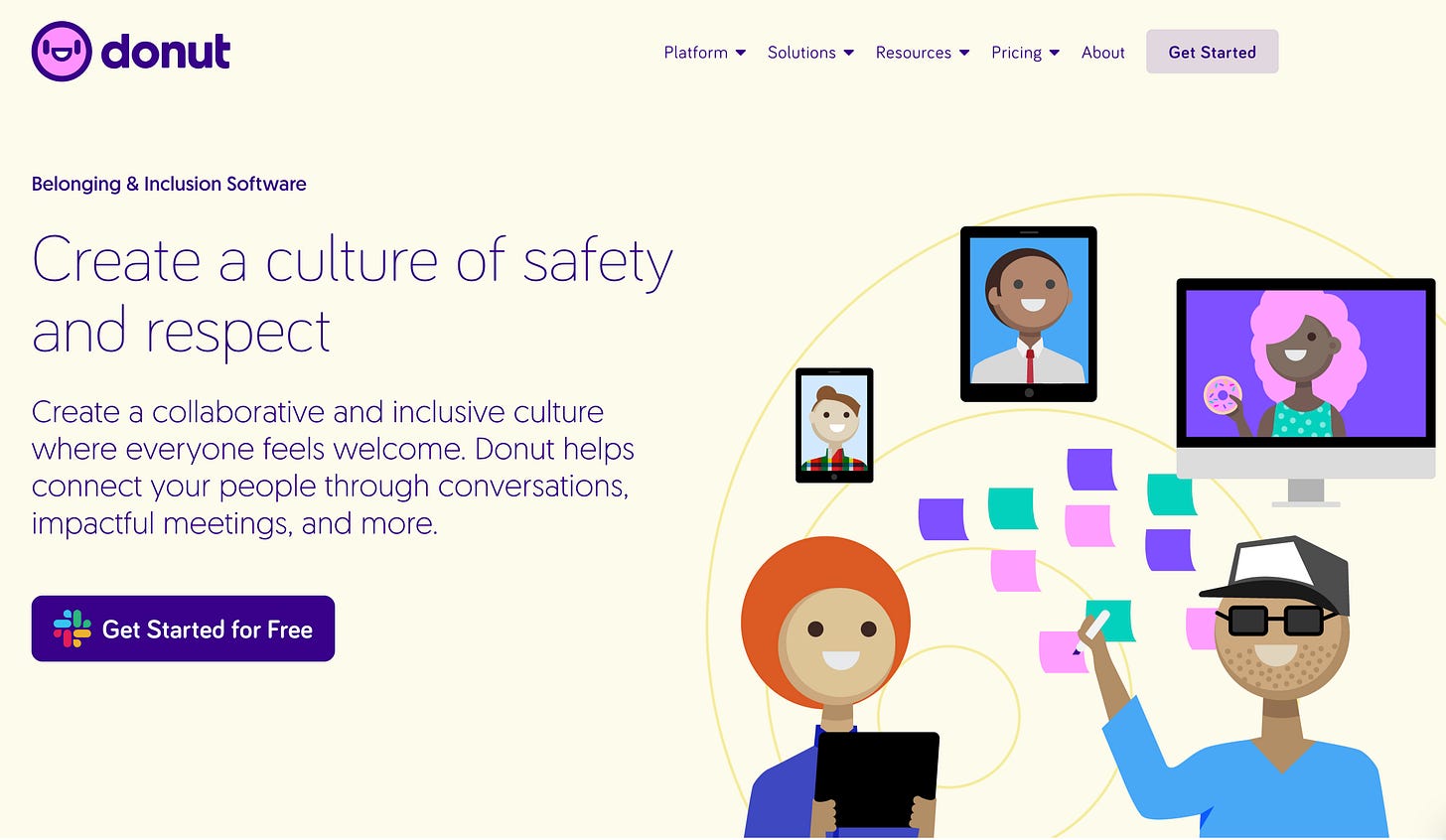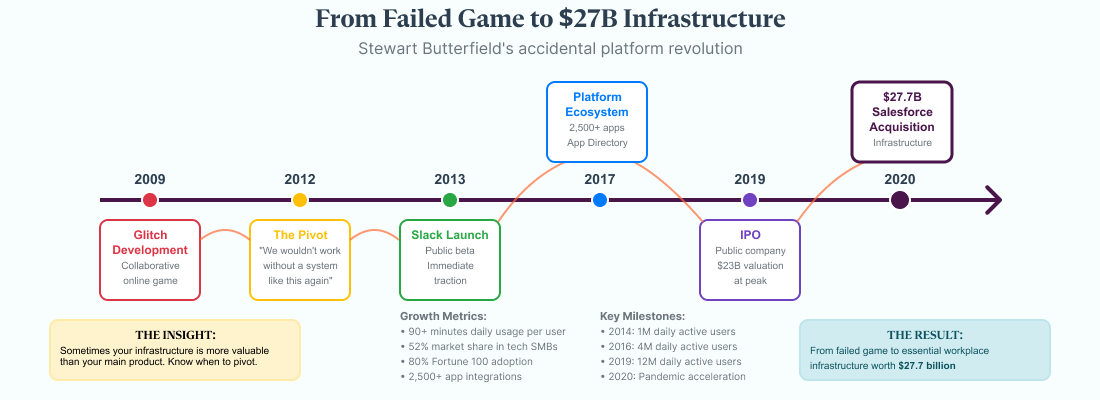The Platform Strategy Slack Used To Quietly Become the Nervous System of Modern Work
How a failed video game accidentally turned better work chat into an irreplaceable $27 billion workplace collaboration ecosystem
My goal for the next 12 months is to help you become a 50% more strategic leader, with at least a 20X return on investment through exclusive strategy deep-dives, proven frameworks, community insights, and direct access to strategic thinking that drives real business results.
Consider upgrading your account for the full strategic experience.
Pandemic lockdown. Day 47. But thanks to Donut, I've just made yet another new work connection outside my usual team.
The crazy thing? Donut didn’t exist anywhere outside of our work Slack. And yet here it was, enabling these phenomenal, human conversations, keeping us going despite the fear and uncertainty.
Donut launched to automatically pair coworkers for virtual coffee chats, providing crucial human connection during isolation.
Meet & Greet

Making the most of Slack’s App Directory for zero Customer Acquisition Cost (“CAC”) distribution, Donut has since facilitated over 10 million employee-to-employee connections across 20,000 companies and raised $12 million from Accel and the Slack Fund.
Donut's success reveals Slack's quiet transformation from messaging app to the invisible nervous system where modern work happens.
But this transformation was never intentional. It all started thanks to a failed video game and a team that accidentally built something that made connecting for work unforgettable.
The “Almost” Game That Accidentally Created A Revolution
To understand how workplace chat made the leap to venture capital infrastructure, we’ll have to go back to a time when Slack was only a tool helping Stewart Butterfield almost build a game.
We can think of Stewart Butterfield as a guitarist who makes his own guitars. He just seems to have far more success as a luthier than as a musician.
In 2009, fresh off selling Flickr to Yahoo, Butterfield assembled his dream team to create “Glitch,” his collaborative, non-combat online game set "inside the minds of 11 giants." But with the team spread across North America, they needed better coordination than IRC chat could offer.
So they built their own chat, with fully asynchronous (messages that waited until you returned), searchable (find that design spec from weeks ago), and extensible (could add any new features as needed).
For three and a half years, while pouring their creative energy into Glitch, they were unknowingly perfecting what would eventually become Slack.
Closing the Game, Starting the App
November 2012 brought the inevitable pivot moment.
Glitch had failed to find its audience, but as Butterfield told his exhausted team, "we have to shut down the game," they realized something profound about their internal tool: "we wouldn't work without a system like this again, and maybe other people would like it."
Butterfield's pitch deck from early 2013 foresaw almost everything, including the exact pricing, product vision, and marketing strategy they would launch with, because they had already validated everything through their own daily use.
Butterfield stumbled on something essential: the most valuable platforms go beyond connecting people to become invisible foundations that make everything else work.
Acquired
Salesforce didn’t pay $27.7 billion for Slack in 2020 for better chat.
They were buying the nervous system of the modern workplace.
While competitors focused on better chat features, Slack became the communication infrastructure that made every other tool in your stack more valuable through integration.
Successful strategists recognize and pivot when people want them for something different than their main act. This is exactly how a failed game about giants' dreams became the platform where the future of work took shape.
Similar to what we saw with Figma, the most transformative business platforms emerge not from trying to build platforms intentionally, but from solving your own workflow friction problems so effectively that others can't live without your solution.
From Workplace Chat to Business Infrastructure
Most software companies think like architects designing fancy features on the most beautiful, functional buildings they can design.
But Slack is like the utility company, supplying the grid that makes every building throughout the city come alive.
Slack’s choices were very different from Discord’s, and led them to build a $27 billion business by making the right choices for their “Where to Play” and “How to Win” choices.
Let’s decode how Slack has created a self-reinforcing system that turned workplace chat into the foundational infrastructure of modern, connected work.



